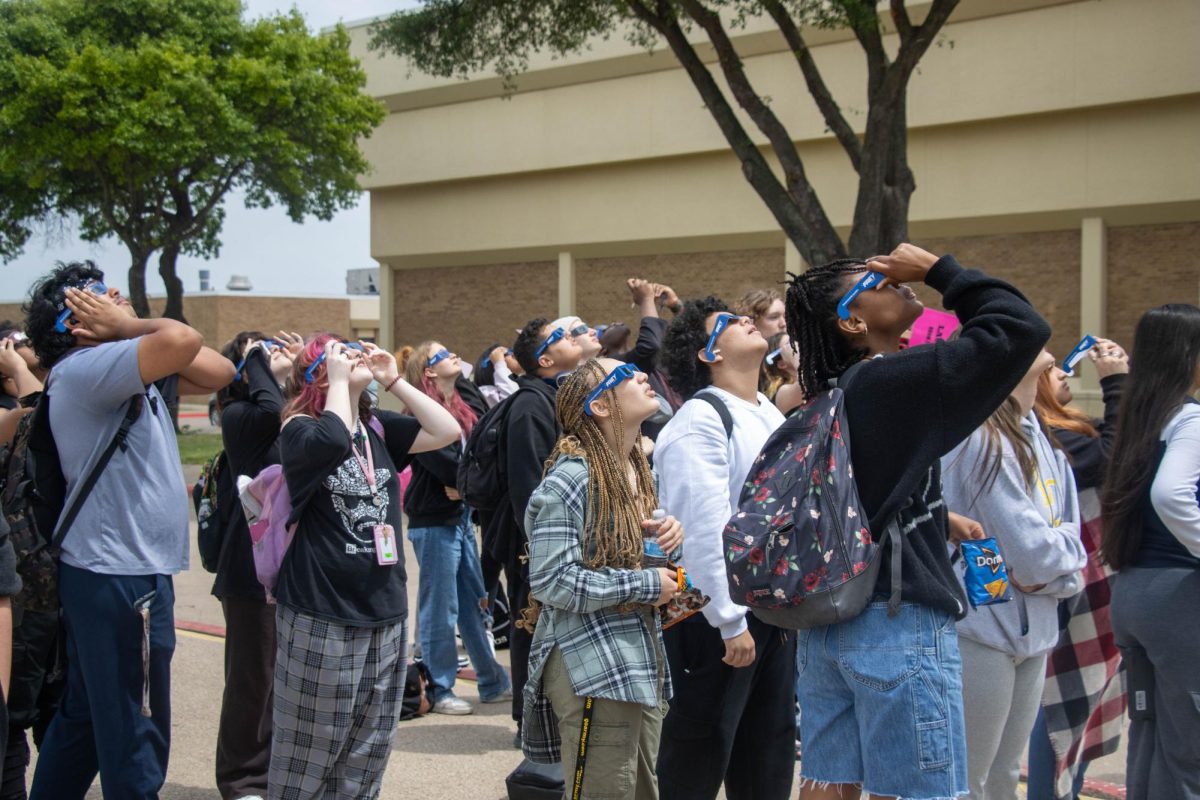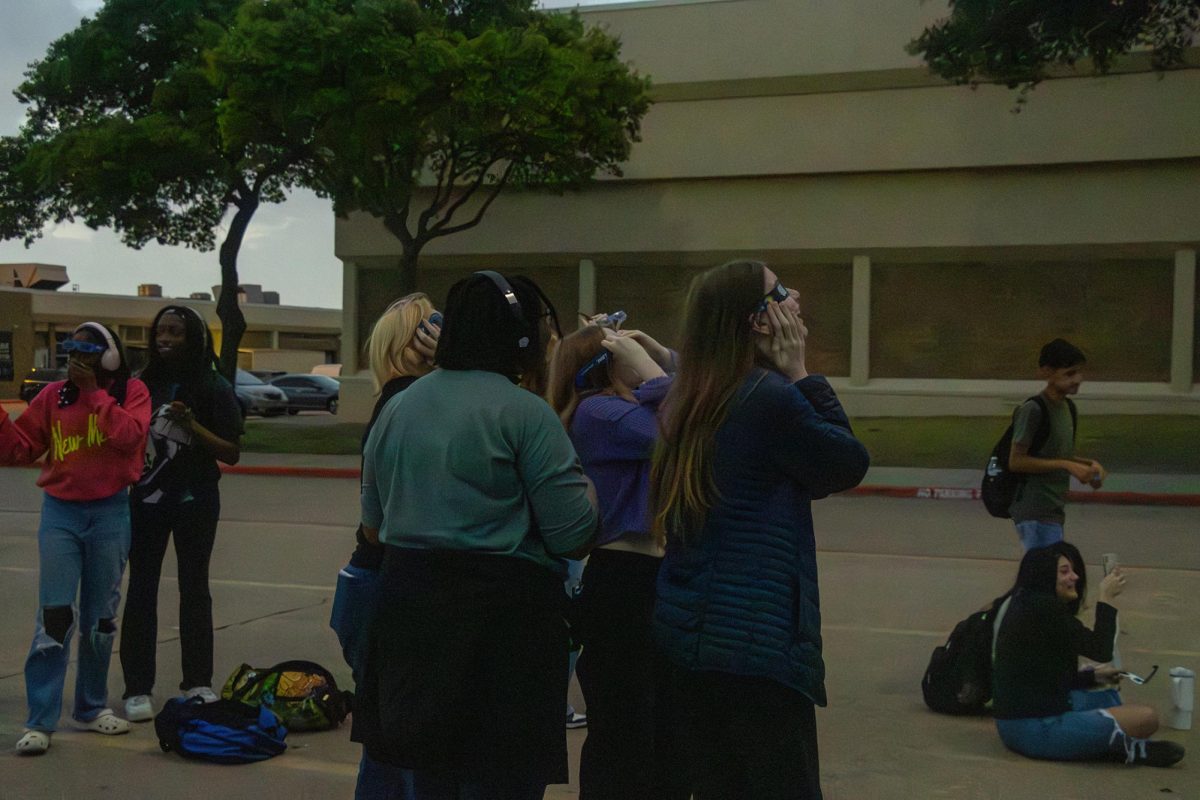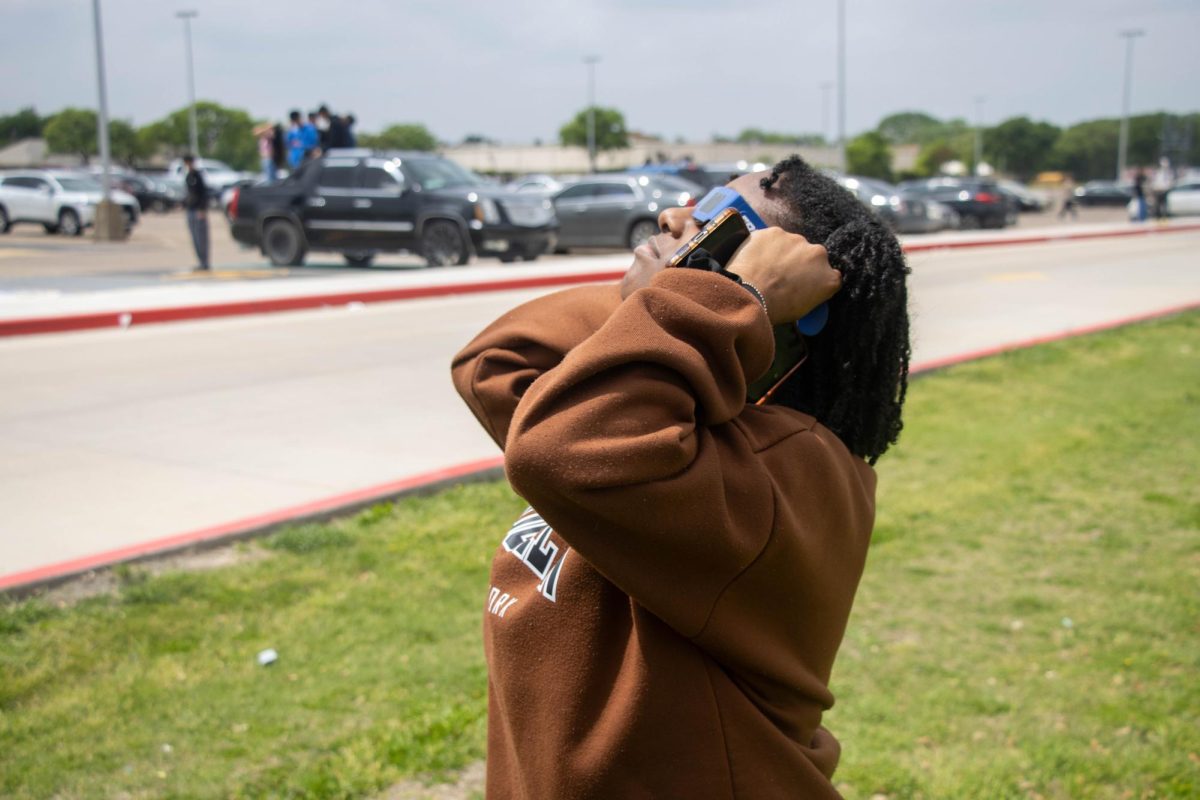Dallas experienced a total solar eclipse on April 8, 2024. This once in a lifetime occurrence impacted many, but left even more confused. What is a solar eclipse? Why are they so dangerous to look at? How can scientists predict the next eclipse?
To put it simply, a solar eclipse is a natural phenomenon where the moon completely covers the sun, casting a shadow onto Earth’s surface. There are two types of solar eclipses; annular and total. An annular solar eclipse is very similar to a total eclipse, but the main difference is the fact the annular doesn’t cover the entire sun, only the very outer edge of the sun. This outer edge you can see is still extremely bright so, even when you see a total annular eclipse, it’s still bright out. But this also makes these kinds of eclipses very dangerous to look at with the naked eye. Since the sun is dimmer, your brain tricks you into thinking it’s okay to look at the sun with your naked eye, but, in reality, it can burn holes in your retina creating blind spots in your vision. You may be wondering, “But doesn’t the sun’s edge show during a total eclipse?” Well sort of, but not really. The outer edge you see during a total eclipse is actually the thin atmosphere of the sun called the corona. This corona is dim compared to the rest of the sun due to its low density; this makes it safe to see during a total solar eclipse.
But many still wonder, how is it that we can predict these solar eclipses before they happen, even down to the very second? This has been a mystery for hundreds, even thousands, of years. There remain records of scientists back in 600 B.C.E. studying the moon cycles in order to predict these celestial events. But a major breakthrough came way back in 1715 when polymath Edmond Halley, the namesake of Halley’s comet, discovered a pattern in the position of the moon. He noticed that it ran in a cycle of about 18 years. With modern sciences we were able to get a more accurate prediction of when eclipses will happen down to the hour. Every 18 years, 11 days, and 8 hours after an eclipse one with a very similar, if not identical, path will happen. We can also use lunar eclipses to gauge solar eclipses as well. Every 9 years, 5 days, and 12 hours after a lunar eclipse, a solar eclipse will happen.
However, this leads people to believe solar eclipses only happen once every 18 years. That’s not the case, though. On average, 2-5 eclipses per year can happen. The only reason we don’t typically hear about these, though, is due to the fact that they happen over the ocean or unpopulated areas. It is very rare to see eclipses happen over major cities like we did here in Dallas.
Solar eclipses are a beautiful, even breathtaking, thing to witness in person. They have been observed since humans first walked the Earth and continue to be something that impacts our culture. This beautiful phenomenon is definitely worth seeing in your lifetime.




